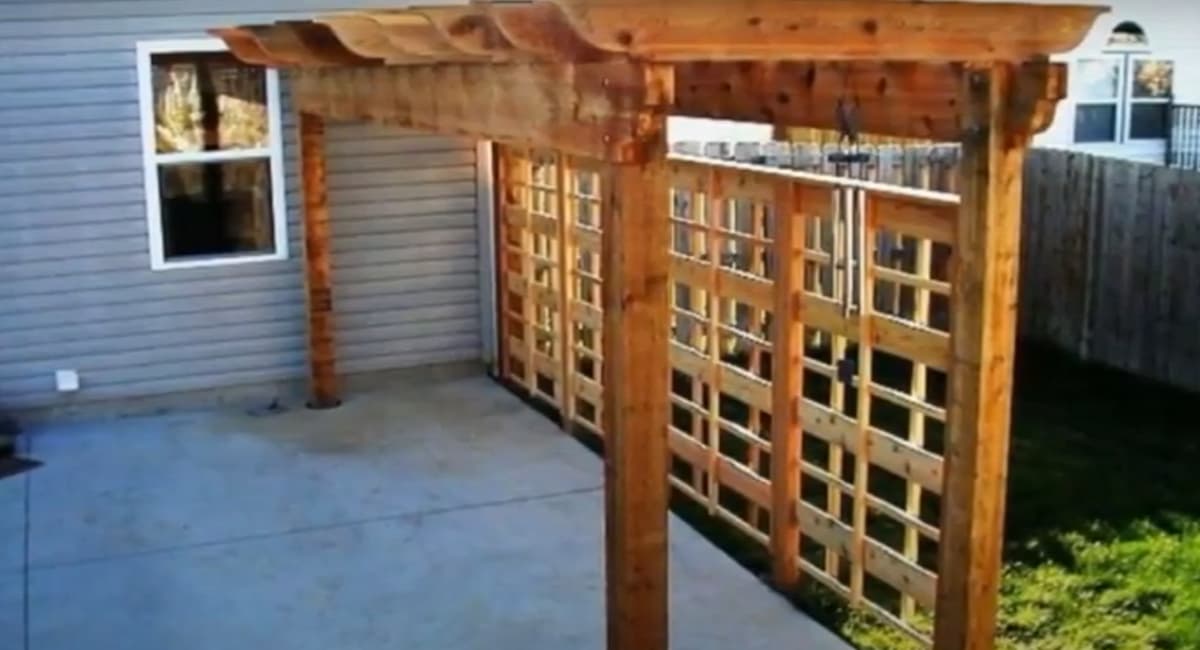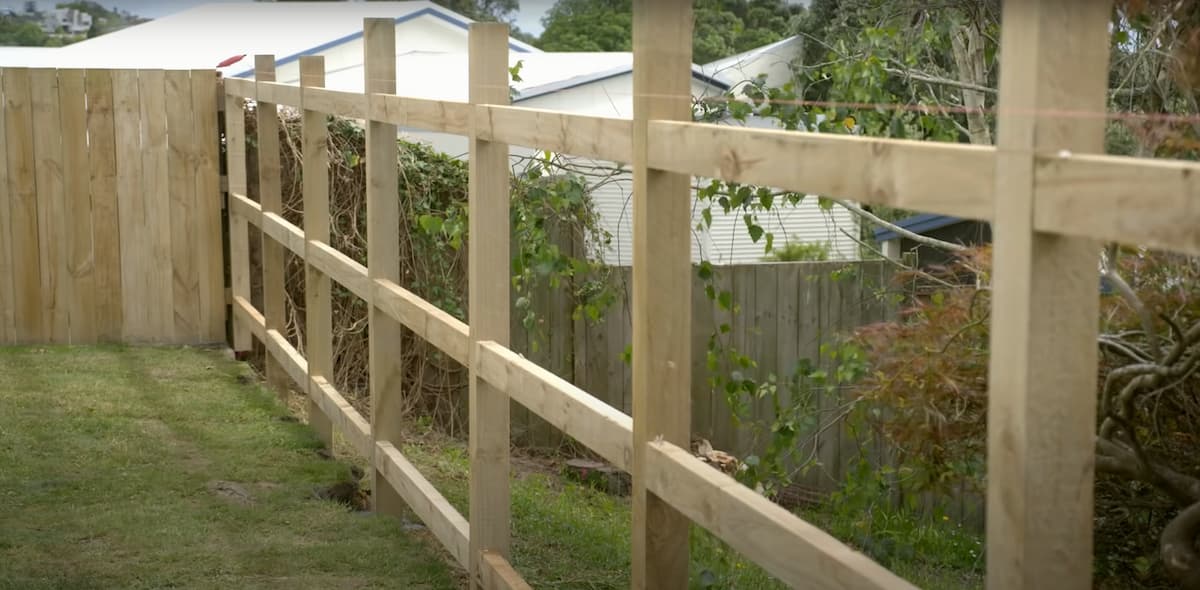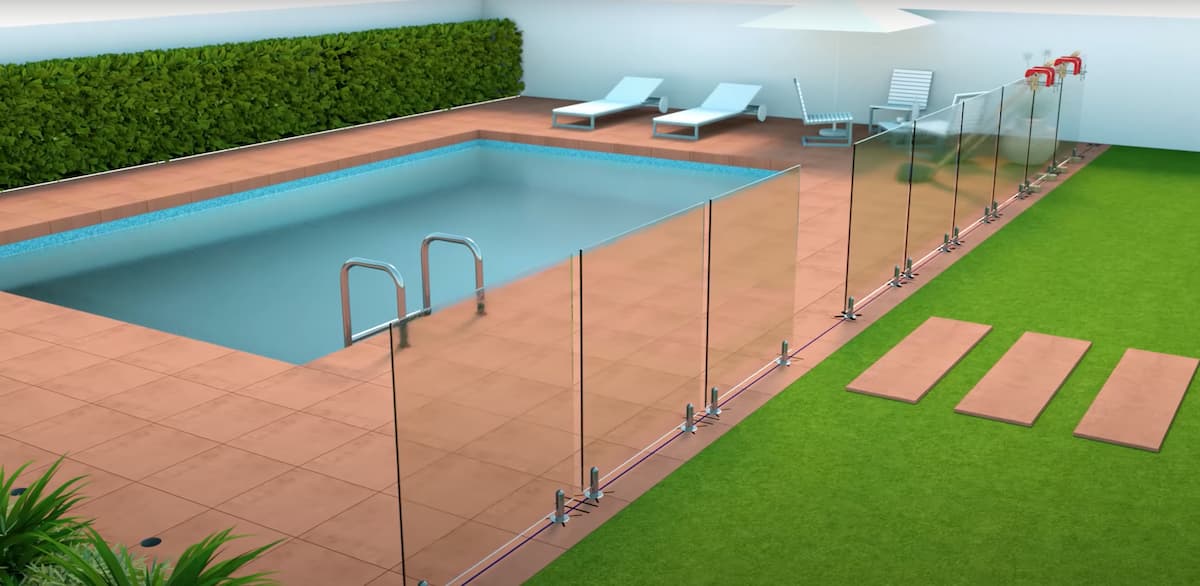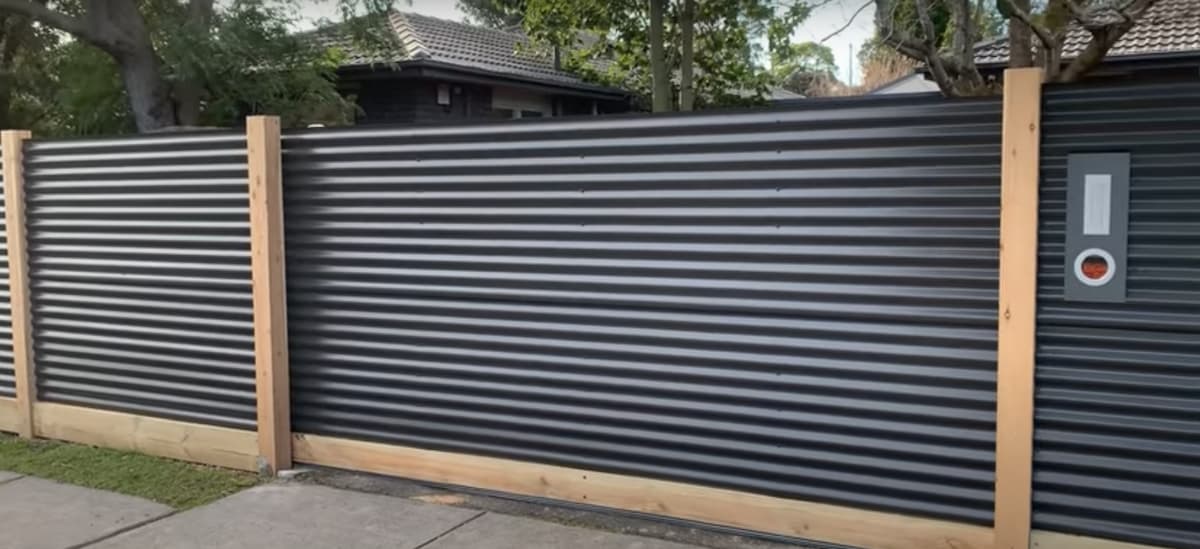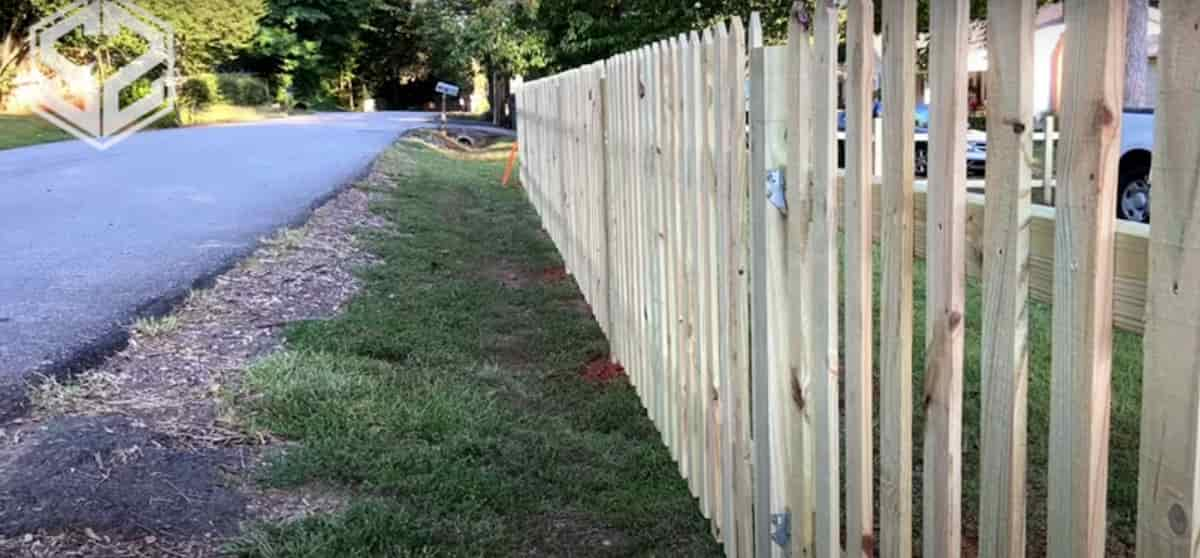
Timber fencing | Colorbod fencing | Aluminium Fencing | Rural farm fencing | Mesh fencing | Pool fencing | Temporary fencing | Garden fencing | Vinyl fencing | Glass Fencing | Brick wall fencing | Brushwood fencing | Wrought iron fencing
Proper fencing enhances the curb appeal of your home. It can easily form the focal point to your landscaping around your property. However, many homeowners think of fences as a way of marking boundaries and providing security.
Whether you are building a new home or renovating your property, consider fresh ideas for your fence. There are tens of fencing options available in Australia, from a white picket fence to a wrought iron fence. The most utilized used fencing materials are bricks, wood and metal. There have been new designs and technologies that manipulate these 3 basic elements that result to elaborate fences.
This article is the ultimate guide to the various types of fences we have in Australia.
Timber Fencing
If you decide to traverse through Australia today, you will note that timber is one of the most utilized fencing options. The popularity stems from the versatility, durability and modern attractive designs. Additionally, timber can withstand harsh weather conditions.
Most homeowners prefer hardwood and treated pine timber. The beauty with timber is that you could quickly knock up a cost-effective standard fence. There is also the possibility of coming up with fancier fence designs. Some of the standout and unique wood fencing options include:
Vertical Timber Fencing
This fencing option is made of impressive timber designs. It is preferred by homeowners who want to maintain security and hide their frontage.
Slatted Wood Fencing Design
This fence option looks to take advantage of the latest trends in fence designs. They are made with colourful tones which superimpose horizontal wood slats against chrome fade wood. This design is finalized by writing the house number on a horizontal slat.
Colorbond Fencing
The primary material that makes up these fences is colorbond steel. Typically, the colorbond steel is prepainted and shaped into different profiles. For your project, you will need to purchase the following items- colorbond panels, finishes, posts, and caps.
Colorbond fences are popular in Australia because apart from its durability, they have some great benefits:
- Termite proof and does not rot.
- Finishes can take a variety of styles and colour.
- Can efficiently provide security and privacy
- Low maintenance.
- The colorbond steel used renders your fence fireproof. It can withstand bushfire during the dry months
The cost of colorbond fencing can range between $11 – $40 per metres squared depending on the complexity, slope of the area and size of the project.
Homeowners have the choice of selecting various types of colorbond fences including Contemporary, classic, ultra, and matt.
Aluminium Fencing
Aluminium is a popular, easy to install fencing material. It is predominantly used by homeowners who own modern homes. It can be customized to sleek designs to fence gardens, swimming pools or the whole property. Due to its versatile nature, aluminium can be crafted into any form. You can also coat it with several finishes to make it look and feel like timber or brick.
Some of the properties that make aluminium a viable fencing option are:
- Low maintenance.
- Durable
- Resistant to rust
- Resistant to fire
- Easy to install
Due to its lightweight nature, aluminium fencing is not a preferred fencing choice for high-security areas. It can be easily damaged or bent. However, it is useful for perimeter fences that do not require a lot of privacy.
In recent times, aluminium has become cheaper than a metal fence. Some of the more popular aluminium styles include:
- Tubular fencing
- Aluminium slat
- Picket
- Panel
Rural Farm Fencing
Rural farm fencing varies depending on the property. Other additional factors include:
- Topography of the property
- Whether it is a perimeter fence or internal fence
- Whether the farm keeps animals and the type of animals.
Fencing meant to provide movement restriction for animals should be robust. For example, fencing intended for cows and horses need to be different from fences for dogs and chickens.
The cost of setting up enclosures for cattle averages $495. The fence posts may be spread 4 meters apart. On the other hand, enclosures for horses cost around $1,500. The average labour cost per hour is around $65.
The boundary perimeter fence encloses the property. It is ideal for flat landscapes and hilly sides. A rural farm fence is typically made of three components:
- Posts that provide anchorage for the fence.
- Fencing wires that run horizontally and vertically around the farm.
- Strainers to hold the wires at the intersection.
Depending on the purpose of the fence, the posts will be placed at appropriate distances to ensure the structure’s integrity. Pine posts that are treated are selected due to their low cost and effectiveness. Wires come in many forms, such as barbed, woven or plain.
Mesh Fencing
Mesh fencing comes in various forms, shapes and products. Manufacturers have customized mesh fences to suit an array of needs for a home or a commercial property.
In Australia, mesh fencing products are categorized based on their uses, such as agricultural, security and commercial. Their popularity stems from various features, including allowing light and wind to pass, great visibility due to its non-compact nature.
The four basic forms of wire mesh fencing material available for you include:
- Galvanization before and after weld
- Galvanization before and after weave
- Vinyl coating
- Stainless steel
These forms also describe the finishing done on the wire mesh. They can be woven, welded, or even knotted.
Some of the common uses for mesh fencing are:
Security: They are common for perimeter and security fences. The standard ones come with 5-6mm holes. Smaller holes ensure that tools cannot be used to cut through the fence.
Railway and Highway fencing: It is commonplace to see wire mesh fences to secure railways and roads. Rail fencing is critical as it ensures minimal damages to the track.
Pool Fencing
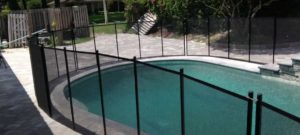
Pool fencing is a barrier around the pool designed to keep toddlers off. They have to be durable and sturdy.
Some common types of fencing used around a pool include Vinyl fencing, aluminium, steel, metal fences, wood fence, mesh and glass. Pool fencing is now a requirement by law for any home in Australia.
Since it is a requirement by law, how much will you spend on it? The cost of your fencing will obviously depend on the fencing materials you select. The cost can range between $200 to $600. Remember that prices are quoted per linear meter. For instance, the cost of a timber fence will start from $200 per linear meter.
In Australia, there are set standards for pool fencing:
- Form a barrier protection for children; the fence should be at least 1.2 metres high.
- Any vertical gaps in the fence cannot be larger than 100mm
- A chain link fence should have a minimum height of 1.8 metres and openings from 13mm to 100mm.
Chain link fencing and mesh fences are common as well. They provide an unobstructed view of the pool and can be coated to increase the appeal.
Temporary Fencing
Companies that provide fencing solutions will most certainly provide temporary fencing products. They are essentially used by home builders, commercial sites, landscapers and demolition areas. The solutions may include :
- Portable and temporary fences
- Crowd or control barrier fences
- Temporary barrier fences around the pool.
- Makeshift hoarding and holding fences.
Some of the other areas you will get to see these types of fences in action are:
Portable temporary fencing securing events and construction sites. Additionally, when authorities wish to fence off sensitive areas, temporary fences come in handy.
The primary advantage of makeshift fences is the ability to quickly and easily set up. They are also easy to pull down and transport. They are basically manufactured offsite ready to be joined to form a fence. Additionally, makeshift fences do not require digging and laying of the foundation. The setup seamlessly fits into the site without much impact on the environment.
However, temporary fences also have drawdowns. They are not the best at providing water-tight security. What’s more, temporary fences may not be able to withstand the punishing weather conditions in Australia.
The cost of temporary fences is highly dependent on the purpose, size and solution offered. Pricing for makeshift fences is not standardized across Australia; therefore, it is best to get quotes from your service provider.
Garden Fencing
You are at liberty to use a variety of fencing materials for your garden and yard. They are useful in providing privacy and security to a yard. Constructing a yard fence may be expensive; however, most Australians take it as a DIY project. Additionally, the type of materials used will determine the overall cost.
Wood fences: Wood is a great material because of its versatility. You can easily decide which type of fence you want for your yard. Furthermore, there is the possibility of using finishes to enhance the appeal.
Chain link fences: These types of fences are cheap and easy to set up. You can decide to pair it with wood to enhance privacy.
Bamboo fencing: A bamboo fence is an environmentally friendly fencing solution. Although a bit more expensive than wood, some homeowners prefer it due to the authentic feel they give to a garden. To install the fencing, bamboo poles are strung together. They are durable and require low maintenance. The average cost of a standard 6-foot bamboo fence in Australia is $1.6 to $10 per foot.
Vinyl fencing: A vinyl fence is perfect for a home garden fence. Technology has ensured that vinyl is durable and cheaper in the long run than both wood and metal fences.
Other notable fences for yards and gardens include a wrought iron fence, a picket fence, concrete fence, and barbed wire.
Vinyl Fencing
Vinyl fences are becoming increasingly popular in Australia. They give off a sophisticated look, require minimal maintenance and durable.
Nowadays, it is not uncommon to see a home or a commercial building fenced with vinyl. Top among the benefits of vinyl pvc fencing is that they cope well with extreme weather conditions compared to other fence types.
The main material that makes up vinyl fences is PVC. This is the reason why sometimes vinyl fencing is referred to as PVC fencing. Vinyl fences have various uses, including:
- Posts and railings: They are practical for fencing larger properties such as ranches.
- Picket fences: A picket fence is ideal for demarcation of sections within your home.
- Security and privacy fencing: They are popular because the setup is inexpensive.
So, what’s the cost of vinyl fences in Australia? The price actually depends on the type and intended function of the fence. On average, expect to spend about $65 for a metre picket fence. For a privacy fence predicated on privacy, expect to pay $80.
Glass Fencing
Is glass fencing worth it? Won’t it break and shatter easily?
Going by the number of glass fencing around pools in Australia, it is definitely worth it.
Glass fencing is popular for pools. Actually, there are three types of pool glass fencing – frameless, semi-frameless and pin-fixed frameless. The pin-fixed frameless design is the costlier option among the three, priced at around $1,790 for 10 metres.
Other notable areas where glass fencing is prevalent include the balcony and stair balustrades. Glass fencing is considered expensive. However, you can use part glass and part other materials. For instance, you could consider using glass and a wood fence between the patio and the pool. However, before installations, take note to observe the Australian standard codes for installation.
The overall cost of your glass fence will depend on the size, labour, and finishing options. Expect to pay between $60 – $90 per linear foot for installation.
Brick Wall Fencing
Brick walls provide absolute privacy and security. They are ideal for fencing around a property. Due to their opaqueness, they guarantee that there will be no prying eyes on your home.
To ensure industry standardization, the Australian government has set building standards and regulations. If built according to the set standards, brick walls are strong, durable and require little maintenance. However, homeowners can still go ahead and built a wall as a DIY project.
The cost of a brick wall fence will depend on several factors, including materials, complexity, labour, size of the fence, and soil type. However, setting up a brick wall should cost you an average of $500 to $800 per metre.
Gardens may also be fenced using bricks, either clay or concrete. The cost may average between $25-$35 per square foot.
Brick wall fencing can take multiple finishes. You may apply different colours, textures and styles. There are many brick wall fence ideas available. Some tend to combine brick fences with other fencing materials.
Brushwood Fencing
Brushwood is a great alternative to timber and brick fencing. For those considering a truly organic stylish fence, consider using brushwood. They guarantee a longer lifespan – probably around 25 years and are impervious to termites.
Brushwood panels are created from hardwood trees available in Australia. Due to the panel bulky nature, a brushwood fence panel is heavy and not as simple to install
Apart from the natural aesthetic, brushwood fences offer the following advantages:
- Brushwood is a renewable source of fencing materials.
- The fence can withstand extreme weather conditions.
- Works well even in exposed areas where you would expect high winds.
- It works well as a noise barrier.
Companies involved in the supply and installation of brushwood fences usually deliver them as panels. However, proper installation demands that a base be laid first before fixing the brushwood fencing panels.
If you ever decide to install a brushwood fence in your garden or home, expect to pay between $130-$270. Get a qualified contractor to ensure proper installation.
Wrought Iron Fencing
Wrought iron was commonly used in the last century. Its popularity stemmed from its strength and durability. These properties still hold true today, and that is why, wrought iron is selected by some for fencing purposes.
Wrought iron fencing is common in heritage homes. They can be designed to provide a stylish look, enhancing the appeal of your home.
Wrought iron fences are more expensive as compared to many other fencing types. The average cost ranges from $26-$34 per linear foot. Factors that influence the price include:
- The complexity of the design
- The property/yard size
- The type of wrought iron used
Some of the advantages of wrought iron fencing include security, ease of installation, adds aesthetic value, durability and versatility.
Wrought iron requires little maintenance. Water and a wire scrub are used to clean, and a new coat of paint is also applied. It is also more durable than wood or vinyl fences and can withstand many types of damages.


